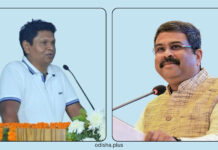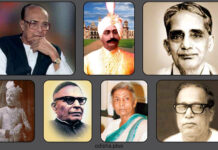Dr. Mrinal Chatterjee
The word ‘Rath-Yatra’ is a combination of two Sanskrit words, Ratha, which means chariot or carriage, and Yatra which means journey or pilgrimage. Ratha Yatra is a journey in a chariot accompanied by the public. It typically refers to a procession (journey) of deities, people dressed like deities, or simply religious saints. The term appears in the Puranas, which mention the chariot journey of several Gods and Goddesses like Surya (Sun God) and Prithvi (Mother Goddess).
Symbolically Rath Yatra is also seen as the journey of life undertaken to achieve Moksha. In the Katha Upanishad (1:3:3:4) Ratha is a symbolical representation of a body, and the yatra is the path undertaken in every birth. The body (shareera) undertakes the journey (yatra) in its every birth to reach the final destination (moksha), and the yatra is known as Rath Yatra.
In real life these chariot journeys have elaborate celebrations where the individuals or the deities come out of a temple accompanied by the public journeying with them through the Ksetra (region, streets) to another temple or to the river or the sea. Sometimes the festivities include returning to the temple.

The biggest RathYatra in India is held at Puri, Odisha. This annual festival is celebrated on Ashadha Shukla Paksha Dwitiya (second day in bright fortnight of Ashadha month) preceding and followed by elaborate rituals.
Well-known travel, heritage and history writer Monideepa Dey writes: Besides the various mentions of this Ratha-yatra in the Puranas, the earliest literary evidence in Odisha of the Ratha-yatra at Puri is from a 10th-11th century CE drama written during the rule of the Somavamshi dynasty, which talks of the yatra of Lord Purusottama (Jagannatha) near the sea shore. The earliest iconographical evidence of this Ratha-yatra is from the Ganga dynasty era (13th-14th century CE), where a frieze from a temple at Dhanmandal in north Odisha depicts the three rathas, each drawn by many devotees.

Historians say that the association of the Odisha kings with the Jagannath deva became close-knit after king Anangabhima III made Sri Jagannatha as the state deity of Odisha in 1230 CE, and the kings became representative rulers under the deity. Chhera Pahanara ceremony during the Rath Yatra in which the Gajapati Maharaja (the King) sweeps the chariot with a broom is a symbolic representation of this concept which posits the king as a servitor of the Lord. The ceremony is still held even if the monarchical system has long been abolished.
Rath Yatra of Lord Jagannath is held in several parts of the country and abroad. The one in Mahesh in West Bengal is said to be the second oldest of such chariot journey of Lord Jagannath and His siblings. Rath Yatra is also held in a grand way in Ahmedabad, Gujarat.
(Journalist turned media academician, the author is Prof Dr. Mrinal Chatterjee presently works as Regional Director of the Eastern India campus of Indian Institute of Mass Communication located at Dhenkanal, Odisha. Views are personal.)
Tags: #Rathyatra #PuriJagannath #PuriTemple #RathYatraHistory





















